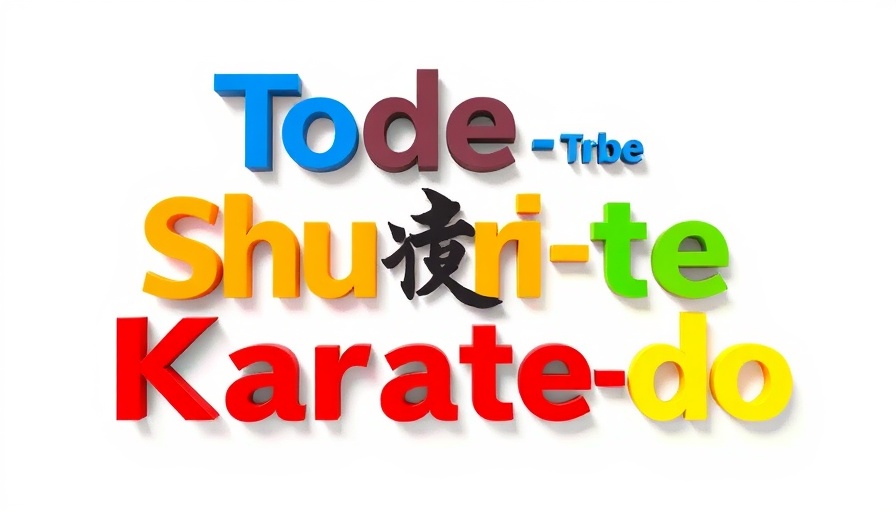
Understanding Karate's Evolving Terminology
Karate isn't just a martial art; it's a vibrant story that captures the essence of Okinawa's culture, intertwining strength, wisdom, and resilience throughout its long history. Each name and term associated with Karate reflects its evolution and adaptation over the centuries as it absorbed various cultural influences.
The Historical Roots: Ti, Tōde, and Tuudii
The earliest terminology used to describe Karate includes "Ti" (手), "Tōde" (唐手), and "Tuudii" (literally meaning China hand). These terms date back to a time when Okinawa had strong cultural ties with China, predating the 18th century. They symbolize a historic bridge between the martial practices of two regions. This exchange carved out a path for Karate as we know it, fostering a rich blend of knowledge and techniques that would resonate through time.
Regional Styles: The Birth of Tomari, Shuri, and Naha
As the 20th century rolled in, distinct styles of Okinawan martial arts began to emerge—specifically "Tomari-te," "Shuri-te," and "Naha-te." Each of these styles represents its geographic roots, embodying unique practices and philosophies influenced by traditions within the villages of Tomari, Shuri, and Naha. Furthermore, renowned figures such as Sokon Matsumura and Kanryo Higaonna were vital in developing these localized branches. Their teachings not only enriched the martial arts community but also emphasized the essential link between culture and practice.
The Evolution of Terminology: An Uncertain Timeline
Modern records show that the terms "Shuri-te," "Naha-te," and "Tomari-te" were first officially noted in 1927. This was marked by a demonstration organized for the visit of Kōdōkan’s chairman, highlighting the burgeoning recognition of these styles. Notably, the mention of "Tomari-te" dates back even further to 1913, indicating its defined presence within Karate vocabulary. However, definitive historical evidence of these terms in regards to distinct styles before 1900 is murky, showing that much of Karate's transmission was informal and oral during that era.
Lessons for Modern Martial Artists
Understanding the evolution of Karate's terminology offers significant insights for today's practitioners. Appreciating the rich tapestry of influences can deepen your training and connection to the art. By embracing both traditional forms and their cultural roots, martial artists can cultivate a more profound understanding of their training, promoting a holistic approach to self-defense and personal development.
Why Karate Matters Today
In an age where self-defense skills are increasingly relevant, grasping Karate's history and terms can enhance one's training in practical ways. Knowing the origins of techniques and the philosophies behind them enriches the learning experience and instills greater confidence in their application, whether in the dojo or everyday situations.
Unlock Your Potential with Karate
Curious to take your martial arts journey further? Delve deeper by joining a local dojo—like Gruber's Karate in Gurnee, where expert training brings out the best in every student. Build not just strength and discipline, but also a confident mindset that empowers you both physically and mentally.
 Add Row
Add Row  Add
Add 




Write A Comment